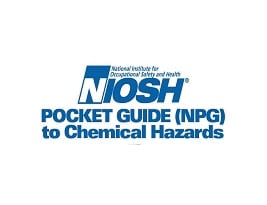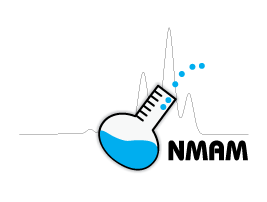Hydrogen Chloride

Overview
CAS No. 7647-01-0
Hydrogen chloride (HCl) is a colorless to slightly yellow gas with a pungent odor. Hydrogen chloride can irritate the skin, nose, eyes, throat, and larynx. Exposure to liquid hydrogen chloride may cause frostbite. Workers may be harmed from exposure to hydrogen chloride. The level of harm depends upon the dose, duration, and work being done.
Hydrogen chloride may be used in the workplace for fumigation, electroplating, mining, chemical synthesis, and the production of synthetic fibers, plastics, dyes, and pesticides. Some examples of workers at risk of being exposed to hydrogen chloride include the following:
- Workers who fumigate ships and buildings
- Agricultural workers who fumigate outdoor pests in areas such as fruit orchards
- Factory workers in industries that manufacture acrylic fibers, synthetic rubber, and plastics
- Steel and iron workers who work in plants that harden iron and steel
NIOSH recommends that employers use the Hierarchy of Controls to prevent injuries. If you work in an industry that uses hydrogen chloride, please read chemical labels and the accompanying Safety Data Sheets for hazard information. Visit NIOSH’s page on Managing Chemical Safety in the Workplace to learn more about controlling chemical workplace exposures.
The following resources provide information about occupational exposure to hydrogen chloride. Useful search terms for hydrogen chloride include “anhydrous hydrogen chloride” “aqueous hydrogen chloride,” and “hydrochloric acid.”
NIOSH Chemical Resources
Related NIOSH Resources
- NIOSHTIC-2 search results for hydrogen chloride—NIOSHTIC-2 is a searchable database of worker safety and health publications, documents, grant reports, and journal articles supported in whole or in part by NIOSH.
- NIOSH Worker Health Study Summaries—NIOSH conducts research to prevent illnesses and injuries in the workplace. The NIOSH Worker Notification Program notifies workers and other stakeholders about the findings of these research studies.
- Immediately Dangerous to Life or Health (IDLH) Value Profile: Hydrogen Chloride—NIOSH reviews relevant scientific data and researches methods for developing IDLH values.
Selected Publications
- A summary of health hazard evaluations: issues related to occupational exposure to fire fighters 1990-2001—DHHS (NIOSH) No. 2004-115.
Related Resources
- ATSDR Medical Management Guidelines (MMG): Hydrogen Chloride
- ATSDR ToxFAQs: Hydrogen Chloride
- EPA Chemistry Dashboard
- EPA Air Toxics: Hydrogen Chloride
- EPA Acute Exposure Guideline Levels (AEGLs): Hydrogen Chloride
- EPA Integrated Risk Information System (IRIS): Hydrogen Chloride
- NLM Hazardous Substance Data Bank: Hydrogen Chloride
- NLM Haz-Map: Hydrogen Chloride
- NLM Household Products Database: Hydrogen Chloride
- NLM Medline Plus: Hydrogen Chloride Poisoning
- OSHA Hazard Communication
- OSHA Occupational Safety and Health Guidelines: Hydrogen Chloride
- OSHA Chemical Sampling Information: Hydrogen Chloride
- New Jersey Hazardous Substance Fact Sheets: Hydrogen Chloride
International Resources
- Canadian Centre for Occupational Health and Safety (CCOHS): Search results for hydrogen chloride
- European Chemicals Agency (ECHA): Hydrogen Chloride
- Gestis Substance Database
- IARC Summary: Hydrochloric Acid
- ILO International Chemical Safety Card: Hydrogen Chloride
- IPCS INCHEM: Search results for hydrogen chloride
- OECD Global Portal to Information on Chemical Substances
- UNEP OECD (SIDS): Hydrochloric Acid



